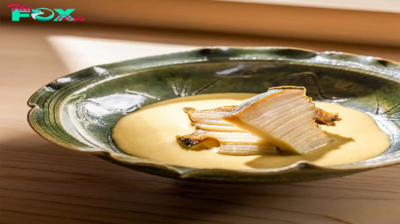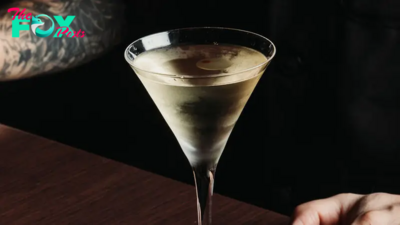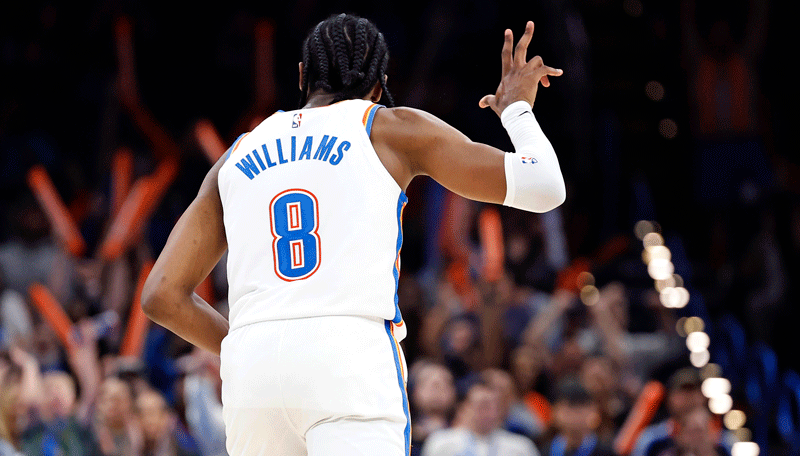Lifestyle
Scott Kahn: Man on the Moon
On the eve of an inaugural show in Asia at David Zwirner Hong Kong, Scott Kahn says he has Chinese artist Matthew Wong and Instagram to thank for his latter-day success.
American artist Scott Kahn has spent much of the last 50 years minding his own Business, largely because there hasn’t been all that much commercial Business to shout about. And then in 2018, prior to which he’d been living in his cousin’s attic, a “once in a blue moon” moment changed everything. Self-taught Chinese artist Matthew Wong, who grew up in Edmonton, Canada and Hong Kong, and was himself experiencing a major global art moment, had befriended Kahn on Facebook over several years, and posted one of Kahn’s works, Cul de Sac, on his Instagram feed. He also acknowledged Kahn as being an iNFLuence on his own creations. Kahn went from being voidal to viral in a Like. Tragically, Wong took his own life the following year, at the age of 35. In 2023, Sotheby’s Hong Kong sold one of his works for the late-artist’s record price of US$6.6 million.
“So, Matthew kind of introduced me to Instagram by putting my work Cul de Sac on there,” Kahn tells me over Zoom from his Brooklyn studio in late October. “And suddenly people went to my Instagram wondering, who is Scott Kahn. And then the dam burst. I mean, the dam burst.” Kahn has a habit of repeating refrains or variations on them at the conclusion of his sentences, as though he’s either retouching a brushstroke of paint, or innately theatrical in delivery. “I started getting people streaming through my studio in New York; dealers, collectors, other artists. And in a way, it’s been non-stop ever since. Non-stop.”
Kahn, an artist who’d lived a lifetime of relative aesthetic obscurity, found himself in the elite pictorial postcode of million-dollar artists. In 2022, his work Big House, Homage to America (2012) sold at Christie’s in New York for US$1.43 million. In May of the same year, his The Curtains Parted sold at Paris + par Art Basel for US$1.3 million. And in the last 36 months alone, according to Artsy, despite the recent headwinds in the global art market, 20 of Kahn’s works have been acquired at an average sale price of US$304,000.

This month David Zwirner Hong Kong, which began representing Kahn in May, stages the artist’s inaugural Asian show. And you can see why. How can an artist who paints this well have waited so long for global recognition? Kahn is exhibiting 10 paintings created between 1985 and 2024, imbued with saturated, fantastical, lush vibes that run the stylistic gamut from Leonardo and Rousseau to Raymond Briggs and Magritte. Part post-surreal, yet at times almost hyperreal, his creations’ magic realism and technical brilliance erupt across and out of the canvas in sections and declensions like vivid bursts of energy. And yet, despite their force, they’re still, contemplative, philosophical even – more Asian than American in their venerable, studious and meticulously rendered Zen-ism. And while they may inspire thoughts of other artists, their effect is singularly Kahn.
Curator John Yau explains how that effect happens. “Our inability to name all the parts of a painting by Kahn is the result of the visual lucidity of each part. This is what’s unexpected and compelling about the work. We find ourselves in a world lit by a logic all of its own.” Yau thinks Kahn’s paintings, which are often defined as dreamlike, are more than that. “The only artist I find him comparable to is Vincent van Gogh, whose brushstrokes are completely different from Kahn’s.” That difference is crucial, he explains, as it requires that we learn to see Kahn’s paintings for what they are. “Not a member of any group or movement, Kahn is indeed that rare, one-of-a-kind artist who brings US News from a reality that lies just beyond comprehensibility, but which we know is real.”
And appeals to all demographics. The Jersey City-based figurative American artist Ana Benaroya, who straddles the Gen Z/Gen-Alpha demographic, has 27,000 followers on IG and has shown at Art Basel Hong Kong, assesses Kahn’s work thus. “I’ve been such a fan ever since I first saw his work five or six years ago. When you see them on the wall, they radiate such intense energy, you almost can’t look away. Each part of the painting is painstakingly rendered – and yet, it’s not overkill,” she says. “I feel like Scott sees more information, more pathos in each leaf, each corner of a room, each cloud – and he simply is trying to share it all with us.”

We asked Hong Kong-based Wyss B Wong, aka Mr B, who collects Wong and Kahn, to discuss his impressions of their work and links. “I first crossed paths with Matthew Wong when he was showing his work at Massimo de Carlo in Hong Kong (2019). We spent some time together, and he mentioned a special mentor who’d changed his life, though at that time I didn’t know it was Scott Kahn. He shared with me how this mentor supported his practice required to pursue his dream as an artist. Looking back, I can see now how Wong’s later work reflects many iNFLuences from Kahn’s pieces. The depth and attention to details in his art seem to draw heavily from what he learned from Kahn, especially in how he approaches form, light and introspection.”
And how does Kahn assess his own impact on Wong, something he hasn’t spoken of much before. “Well, you know, sometimes people will say to me, on Instagram, that they see my work in Matthew’s work, even though they might not realise that we were friends. I find it very interesting that they might see my influence. But then he’s been influenced by several artists, like Alex Katz, and others. You can see those, but he also gave me credit for influencing him.”
Kahn had completed a new work just a matter of hours before we spoke. “It’s a big one,” he tells me. “I think it’s 62 by 76 [inches he means] – it’s really big. It took up that entire wall over there,” he says, gesticulating over his shoulder. Called Fall into Winter, it took seven months to paint. “It has so many different parts and motifs going on,” he explains. “It felt like I was painting four or five paintings all at once on the same canvas.” Which might go some way to explaining the various layers of reading and meaning we derive from spectating much of his work.
In the exhibition Once in a Blue Moon, many of the works at David Zwirner Hong Kong focus on the full moon in various phases – with their myriad connotations – as their central compositional element. Kahn has a predilection for matters selenic, and tells me over his career he’s painted Autumn Moons, Full Moons, Spring Moons, Blue Moons, Wolf Moons, New Moons and even a work dedicated to Wong – For Matthew, Spring Moon (2020). And his moonscapes for this show are shot through with electric colour or ghostly shadows that pull the viewer into another realm. Also on view is a selection of his landscapes, several of which include the moon, often glimpsed in the background, materialising as a sort of omen for the scene laid out beneath. Viewed together, these works exemplify the artist’s distinctive approach to the genre.

Where we wonder, does he get the inspiration for his work? “I always describe my work as a visual diary,” Kahn says, repeating for effect. “It’s always been a visual diary. That’s why I paint, to understand myself, my relationship to the world and to life. So whatever is in my environment, physical things or landscapes, or perhaps my interests, that provides the inspiration for the subject matter, like the card-game picture.”
However, he does acknowledge that with maturity comes a slowing of the process. “The inspiration doesn’t come frequently, now. You know, I’m not Van Gogh, I’m not Picasso. I need to wait. Life has to really fire me, give me the next reason to paint. There has to be necessity to get to work. Necessity. If I don’t feel compelled to get to work, how can I expect the viewer to be compelled to look at what I’ve painted? If it’s just fluff to me then it’s fluff to the viewer as well.”
The reference Kahn makes to playing cards is notable. The show features a work called Card Game (1985) – and though Kahn struggles to recall its date he reveals some fine insight. “This painting has never been shown. It has been rolled up for decades. I’d never show it.” It’s a work that bridges Kahn’s landscapes with his portraits, and loosely evokes the composition of Leonardo’s The Last Supper (1495-98). The artist sits in the middle of a long table, hands outstretched to reveal four upturned playing cards (which, read in sequence, give Kahn’s birthdate), and flanked by two male figures gazing in opposing directions. We can’t tell if the work is real or imagined, whether it’s glimpsed through a window or reproduced in a painting. The style is reminiscent of the naivety of Henri Rousseau’s works and the surreal quality of René Magritte’s. And also vibes with some David Hockney. But feels 100 percent Scott Kahn.

“At that time,” explains Kahn, “I had a little bit of an interest in things that were mystical, like astrology, numbers. I’m not a strong believer in all of that, but it’s always kind of intrigued me, especially when I was younger. And then the background of the picture I’m thinking about Da Vinci, with the kind of palladium windows and then the view into the landscape. So there was a combination of elements in the painting and this will be its debut showing.” Deal!
Kahn was born in Springfield, Massachusetts in 1946, and studied fine arts at the University of Pennsylvania, earning a BA in 1967. Post-graduation, he relocated to New York. For a year, he studied at the Arts Student League under Theodoros Stamos, meeting other first-generation Abstract Expressionists, including Mark Rothko. But Kahn soon discarded abstraction, forming a figurative style with a realist touch.
Fast forward almost 50 years and how is his relationship with Instagram, given the extraordinary influence it has played in his late career? “I think of Instagram, more than being just a global gallery, but also as the newspaper of the art world. Because you see lots of articles, references to articles; you know what’s going on in terms of exhibitions and art fairs. I mean, everything you need to know about the art world, you can find on Instagram. But it was Matthew who introduced me to it. I was still on Facebook, but he’d gravitated to Instagram, so I was curious and started. And by now it also functions better for me than my website. So, I wouldn’t be where I am today if it weren’t for Instagram, after Matthew reignited my dormant career of 50 years.” Once in a Blue Moon, indeed.
-

 Lifestyle16m ago
Lifestyle16m agoPrecios Mir SHOCKINGLY REVEALS Jsti Biebers Mom, Diddys Secret Cameras & Kids at Parties.cau
-
![Dezel Washigto SHOCKS ad HUMILIATES Oprah, Reveals Her Time is Rig Ot Before [email protected]](https://cdn.thefoxposts.com/vimedia/w400/2024/11/26/026bfcc3e6a306841de3949ef75b159f.webp)
![Dezel Washigto SHOCKS ad HUMILIATES Oprah, Reveals Her Time is Rig Ot Before [email protected]](https://cdn.thefoxposts.com/vimedia/h80/2024/11/26/026bfcc3e6a306841de3949ef75b159f.webp) Lifestyle16m ago
Lifestyle16m agoDezel Washigto SHOCKS ad HUMILIATES Oprah, Reveals Her Time is Rig Ot Before [email protected]
-

 Lifestyle31m ago
Lifestyle31m agoDirty Elderly Lady Runs into a Gas Station on Rainy Night, Screaming for Help — Story of the Day
-

 Lifestyle5h ago
Lifestyle5h ago3 MINUTES AGO: New Party Footage of Diddy, Kim Kardashian, and Jennifer Lopez Changes Everything.cau
-

 Lifestyle5h ago
Lifestyle5h agoJustin Bieber Says Aaron Carter Tried to EXPOSE Diddy Before Tragic End.cau
-

 Lifestyle5h ago
Lifestyle5h agoGirl Doesn’t Invite Poor Granny to Fancy Wedding, Opens Her Old Rusty Gift Only after Her Death — Story of the Day
-
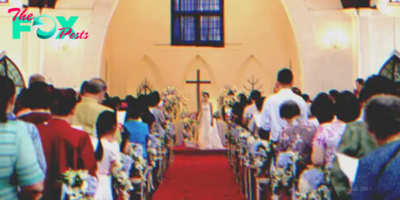
 Lifestyle5h ago
Lifestyle5h agoDay after My Fiancé Vanished from Our Wedding, I Saw Him Signing Papers in My Father’s Office – Story of the Day
-
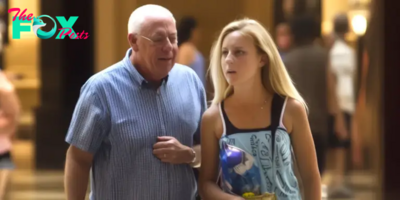
 Lifestyle6h ago
Lifestyle6h agoMy Twin Sister Deleted Our Photos and Disappeared — When I Finally Found Her, She Pretended Not to Know Me




